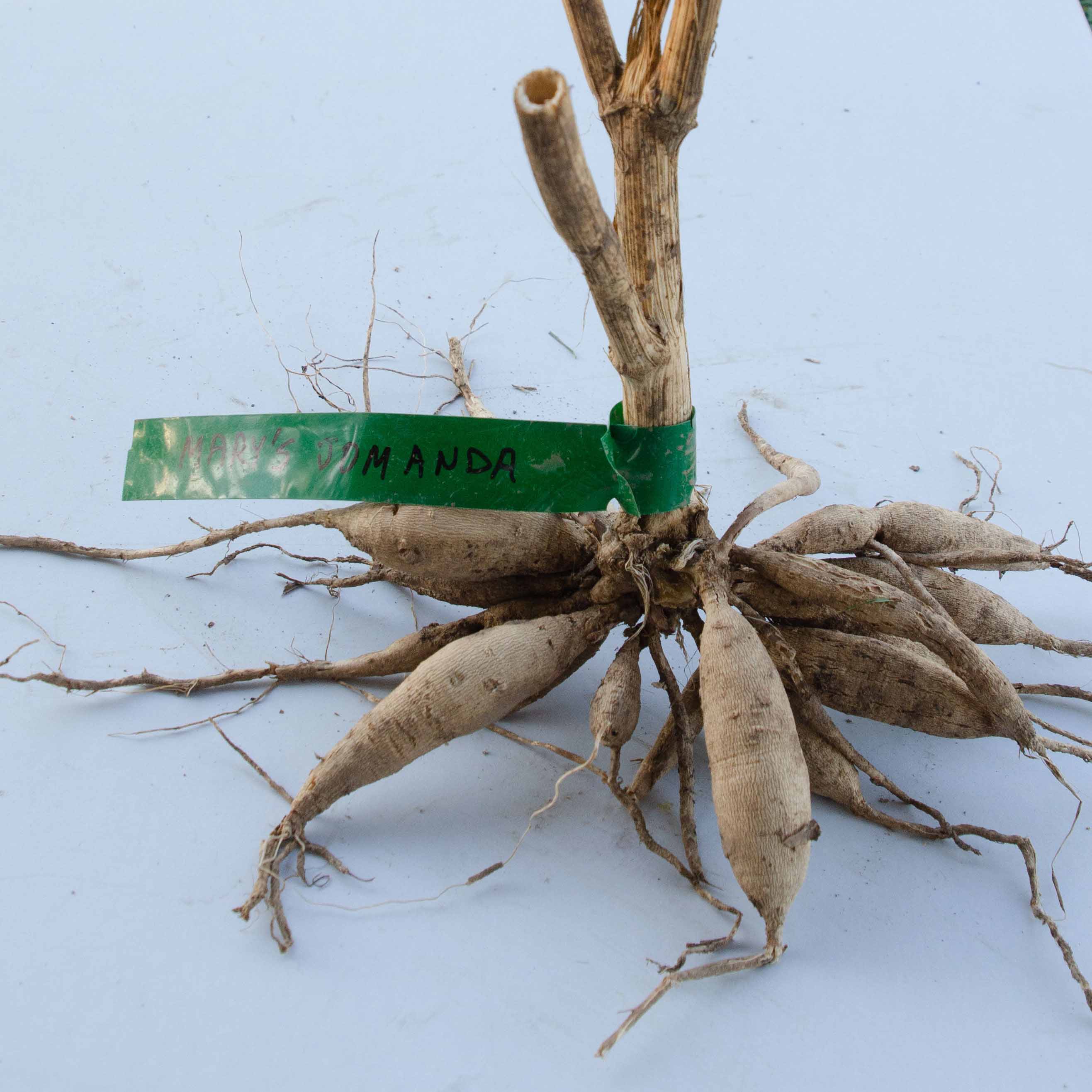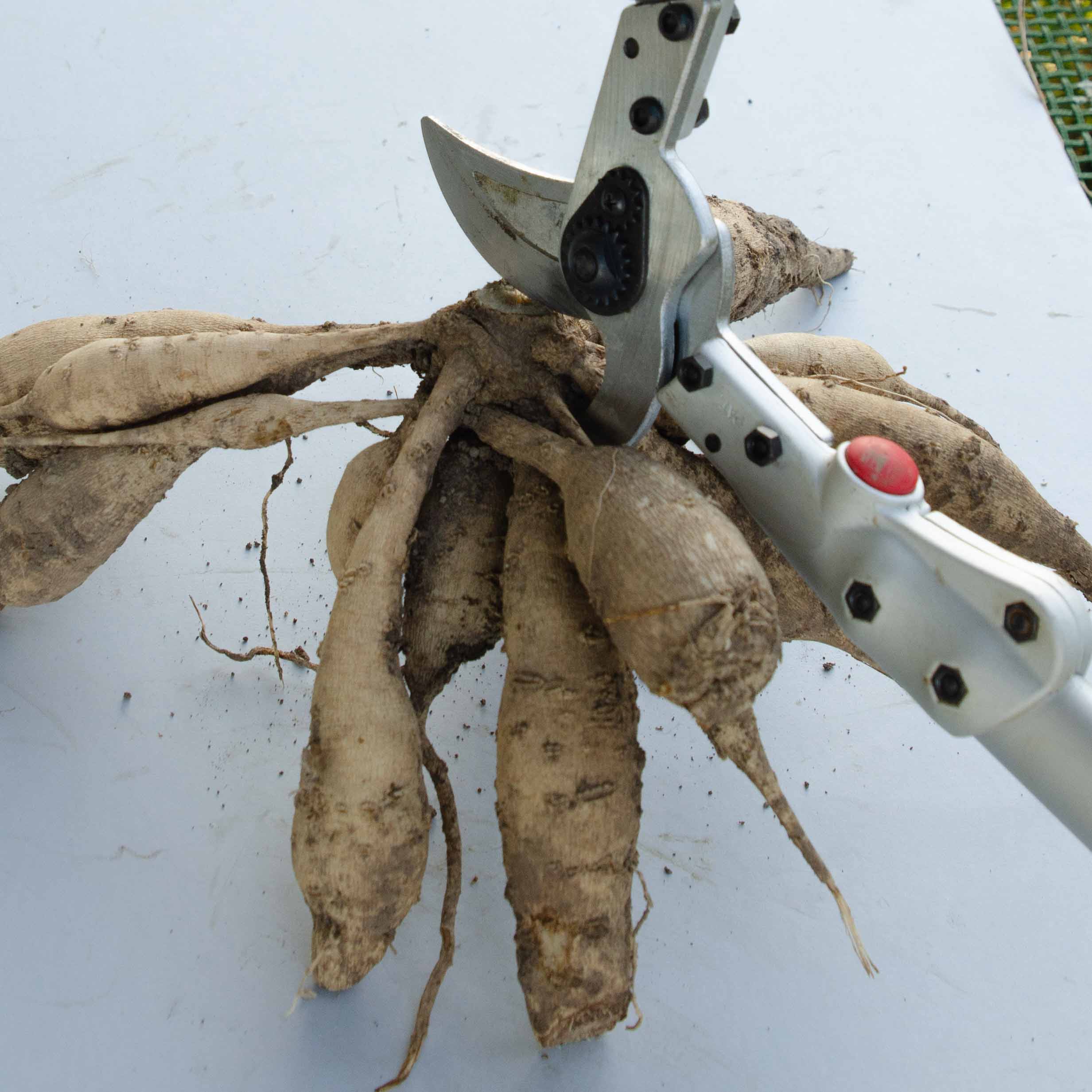 | dahlia society of victoria | LOGIN: |
digging and dividing |
Home gardeners don’t need to lift and divide their plants each year although it is advisable to do so. If the drainage is good the rootstock will survive winter and regrow in spring. Each plant will produce a clump of new tubers which, undivided, will produce smaller plants with poorer quality blooms. Eventually the plant will become so congested and the results so poor that it should be lifted and divided. |
A tuber is a swollen root containing the food that supports the growth in spring until feeder roots develop. Each tuber is attached to the base of the plant stalk (the crown) by a connector (the neck) and has a tail from which the feeder roots spread. The number and size of the tubers in a clump, the size of the crown and the thickness of the necks depends partly on the growing conditions but can vary significantly from one variety to another. By dividing the clump to separate the tubers, each with a section of the crown from which the dahlia will reshoot in Spring, you can increase the stock of your favourite plants. |
|
Preparing for LiftingBefore lifting tubers for replanting, go through the garden to dig and discard plants that were weak or that produced inferior blooms. If any plants had signs of virus send them to landfill or the incinerator. In May the plants will start to die down naturally. As the plants go yellow, cut them back by about a third and then a week or two later by another third. Covering the cut stems with aluminium foil stops watering entering and rotting the crown. Alternatively, a hole drilled into the stalk near its base will allow water to drain from it. When the plants have died back, trim them right to the base. This staged approach helps reduce disease in the dying plants and allows all the plant’s energy to go to fattening up the tubers. If your ground drains well you can leave tubers in the ground until spring when you can dig, divide and replant in the same operation. Otherwise mid-June is a good time to start digging and storing tubers. Unless your soil becomes particularly heavy and wet, the work can be done over days or even weeks to suit the weather, your convenience and your back! At each step of the process the variety name can easily become separated from the clump or tuber. Keep a name label with the clump and then ensure the individual tubers are clearly identifiable on division and when storing. |
DiggingUse a spade to cut the feeder roots around the clump (cut about 400mm from the centre of the plant) to avoid breaking the tubers’ necks before lifting with a spade or fork. Leave soil on the clump until you are ready to wash and divide. The clump can be kept under the shelter of an evergreen tree or the shady side of a fence or shed. |
DividingStart by washing the clump and cutting it in two, unless the clump is small. Use secateurs or a sharp knife to separate the tubers, each with a section of the old stalk containing one or more eyes. Discard the original tuber – usually found at the base of the clump and easily identifiable as old and discoloured. It is easier to divide clumps shortly after digging, before the crown hardens and becomes difficult to cut but this makes it harder to find the eyes before they start to sprout. If the clump is small and the plant precious, wait until the eyes appear. Otherwise, just cut off each tuber with a section of the old stalk attached. Most of them will have an eye that will become visible later. |
|
|
|
Tuber with piece of the stalk base from which the eyes grow. The small tuber broke at the neck and will not shoot. |
If you are not replanting the divided tubers immediately you will need to store the tubers to protect them and keep them in good condition so they will flourish when they reshoot in the spring. |




